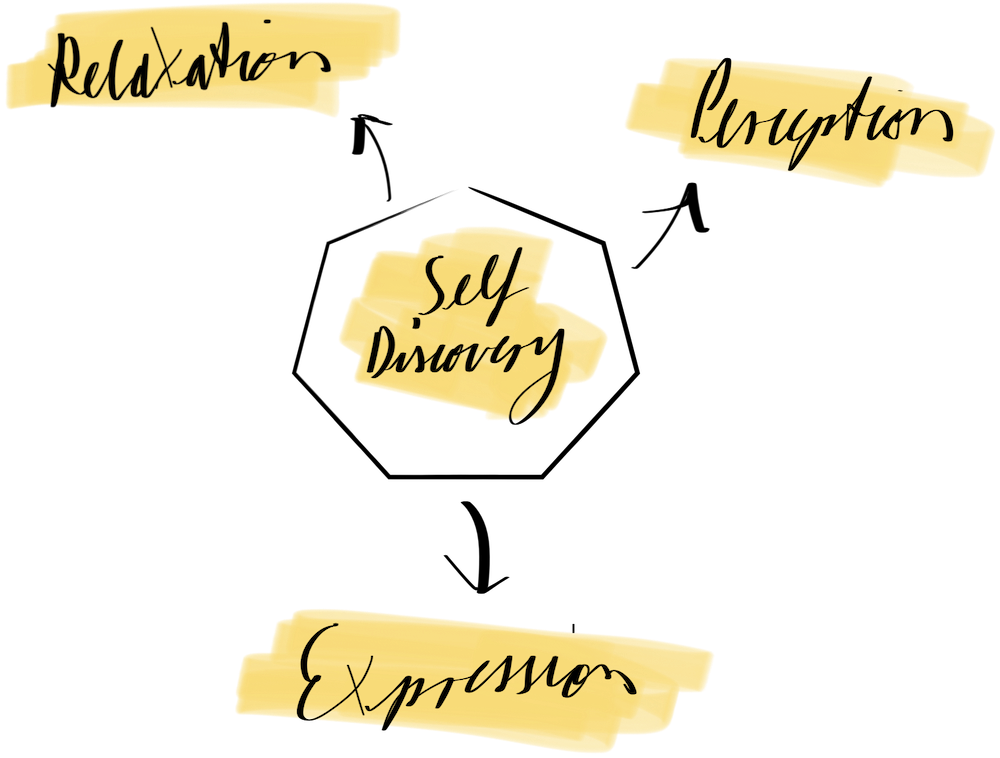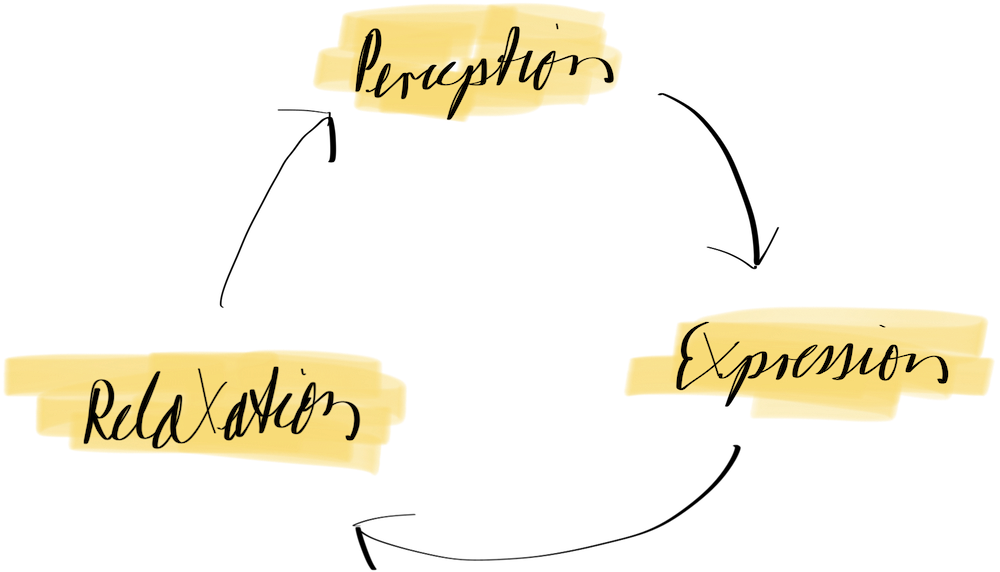The Perception, Expression, Relaxation Framework

I use a framework for the practice that has three fundamental elements:
A) Perception
B) Expression
C) Relaxation
So in short, you can call it: P.E.R-Framework
To put things into place:
The idea of the framework is to provide a supportive structure for the practice.
Never shall anyone become the slave of the framework.
Tear it down when it is not useful.
But I believe this framework is vastly useful for the practice of discovering the self and creating and bringing your soul into the world (something I am elaborating about in other texts).
The 3 parts of the framework explained:
Perception
The fundamental idea of this pillar is that:
A) Your „self" is not just made by what you do, but maybe even more by what you perceive.
B) Your perception is the border of the world you can take action in. That means: if you cannot perceive something, you will not be able to take decisive action on something. You will not respond to something that you do not perceive.
C) You can refine your perception. And it will expand your world and self to refine your perception.
You refine your perception through being present with what you are doing and where you are. Like the Architect that walks through the city and sees it differently than others, because of the practice he is doing. The Artist, the Winetaster, the Massage therapist, etc. etc. (Many professions are based on a very refined perception.)
You will only be able to discover yourself if you can perceive yourself.
For this, I have many exercises.
Expression

Your actions are expressions of yourself.
To discover yourself, it is extremely helpful to act with creative presence.
What is creative presence?
When you are in the now and you bring yourself fully into what you are doing. You will feel an expansion of the self. The "creation" might be clearly perceivable from the outside, like when you craft something with your hands, or it might be "invisible", like when you meditate and there is an expansion through the practice of the mind.
In that sense, some actions create something permanent, like an artist creating a sculpture. It is still there when the sculptor leaves the room. But when the singer sings live and is not recorded, it is ephemeral. The moment the singer stops singing, there is no singing anymore in the room. Maybe a moment of echo, and that's it.
Permanent and ephemeral (non-permanent) creation both have different effects on the self, so it makes sense to explore both.
Anyway, all action that is taken in presence and with the full self behind it is creative because it expands the self.
I have come to the conclusion that there are 4 main paths of such full expression:
- - Physical and Mind Practice
- - Crafting
- - Art
- - Communication / Interacting
In my opinion, to walk all four paths supports a holistic discovery of the self. Not necessarily all paths should be walked at the same time, but it makes sense to have stepped into each path at some point.
I provide a few examples of all 4 paths to make sure you understand what they encapsulate:
Physical and Mind Practice:
Movement, Meditation, Primal Stressors (fasting, cold, etc.), and more.
Crafting:
All crafts like Woodworking, Tailoring, Knitting, Smithing, Repairing, etc.
Art:
All arts like Painting, Acting, Singing, Sculpturing, etc. (also all arts that have no name or lobby)
Communication / Interacting:
All ways we communicate and interact: through talking, physical expression and touch, writing, etc.
Many things reside in more than one of the paths, like singing, which is physical, an art, and a way to communicate.
I usually put quite an emphasis on the physical and mind practice, as the relation to self-expansion is rather clear for most people and it is accessible as you can do a lot of things without any equipment or partner.
Nevertheless, I see the 3 other paths as equally important, and all my advanced students have worked with me on all 4 paths.
The third part:
Relaxation

When you relax, the self starts to integrate the practice. What you did and learned has the possibility to become part of you. Resting enough and deeply is thus imperative for self-discovery.
When you relax, you regain strength, energy, balance, and drive.
In relaxation, the door opens for sudden insights into the self.
Relaxation is not always seen as appropriate in an industrial society. It feels like we are still realizing the importance of relaxation.
To completely relax and do nothing is a difficult task for many.
In some, it can create anxiety, as things from deep within might come up.
For others, it feels „wrong" because the narrative they have internalized is that you always need to be busy or at least play busy.
For many, to relax starts with an act of courage, to allow yourself to just be, to stop to consume or produce.
The paths that propagate extreme busyness and non-stop productiveness are fake paths that do not lead to the self.
For developing the self, relaxation cannot be skipped.
The Balance
I try to hit a good balance of focusing on Perception, Expression, or Relaxation. Obviously, in reality, those are not clearly distinctive from each other, but elements that can occur together in a practice.
This is the framework I use in my teaching.
In another text, I will explore how the path to an individualized practice is forming using this framework.
Joseph Bartz 2025-08-11
Note: Further material about two concepts mentioned in this text:
Primal Stressors
Doing Nothing